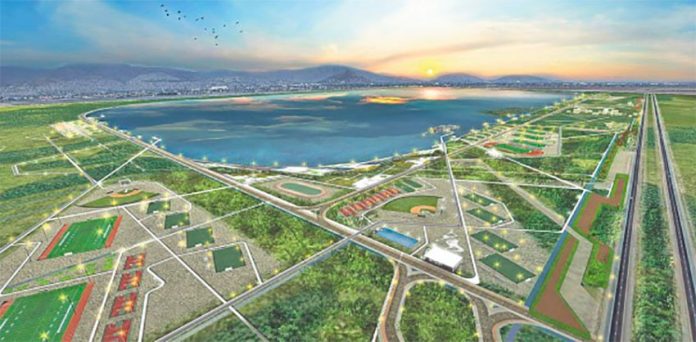A huge ecological park to be developed on and around the site of the abandoned Mexico City airport project will cost just over 17.7 billion pesos (US $808.7 million), the National Water Commission (Conagua) has determined.
According to an investment proposal recently submitted to the Ministry of Finance, development of the 12,225-hectare Lake Texcoco Ecological Park (PELT) will begin in 2021 and finish in 2028.
Conagua said the outlay during the current government’s six-year term (2018-24) will be just over 10.9 billion pesos with a first installment of 2.9 billion pesos to be allocated to the project next year.
The water commission also calculated that the operation and maintenance of the park, which will be divided into four different zones, will cost just over 13 billion pesos during a period of 31 years.
The total cost of the project will therefore be at least 30.77 billion pesos (US $1.4 billion).
Referring to the grandeur of the project and its waterways, President López Obrador said earlier this month that the ecological park will be like a “new Tenochtitlán,” the water-rich capital of the Aztec empire that once stood on the land where Mexico City is now located.
Iñaki Echeverría, an urbanist and architect who designed the PELT, said last week that one area of the park will be opened to the public in 2021.
The ancient lakebed site of the abandoned airport, a US $13-billion project that was canceled by López Obrador after a controversial public vote before he took office, will be part of the PELT’s 4,875-hectare Zone II.
The zone, much of which will be reforested, will feature three different parks with gardens, public spaces, walking paths, sporting facilities and parking lots, according to a cost-benefit analysis.
Across the PELT’s four different zones, a total of eight separate parks are slated for development. Zone I will encompass six restored lakes and lagoons including Lake Nabor Carillo while Zone III will include three more lagoons.
Zones III and IV will set aside land for agricultural purposes and a solar farm is slated to be built in the former.
The government expects that the PELT, which will dwarf Mexico City’s 678-hectare Chapultepec Park, will lead to a reduction of respiratory illnesses among local residents and generate a range of other environmental benefits including improved regulation of water resources.
It also expects that the project will add value to real estate in six México state municipalities and two nearby boroughs of Mexico City.
Conagua said the PELT will “promote inclusion and social cohesion” in the surrounding areas and “generate identity and pride” among people who live in the eastern region of the Valley of México.
Echeverría orginally designed the Lake Texcoco Ecological Park in 2010 but the project was sidelined four years later by former president Enrique Peña Nieto’s plan to build a new airport on land located about 25 kilometers northeast of central Mexico City.
Source: Reforma (sp)
